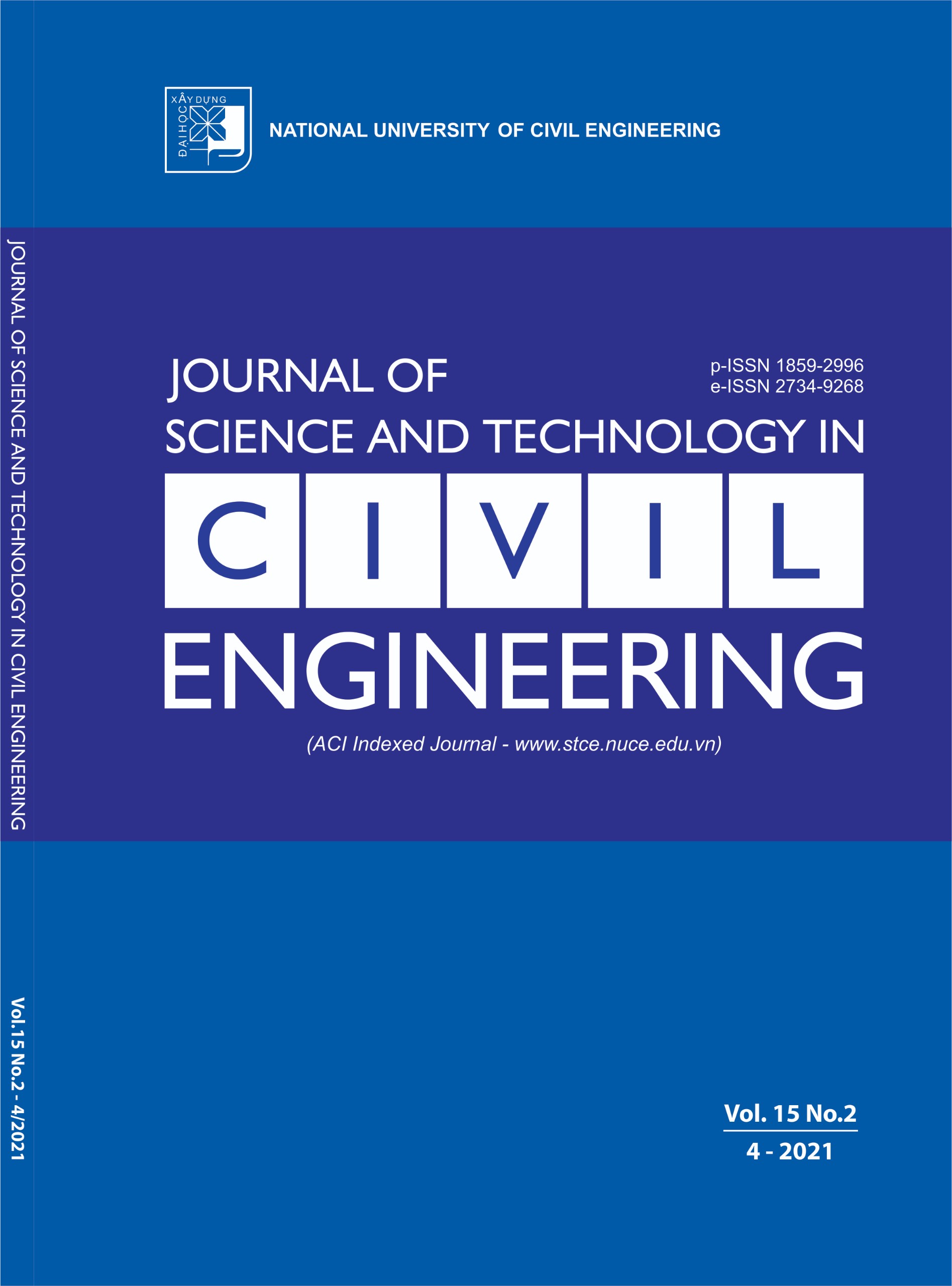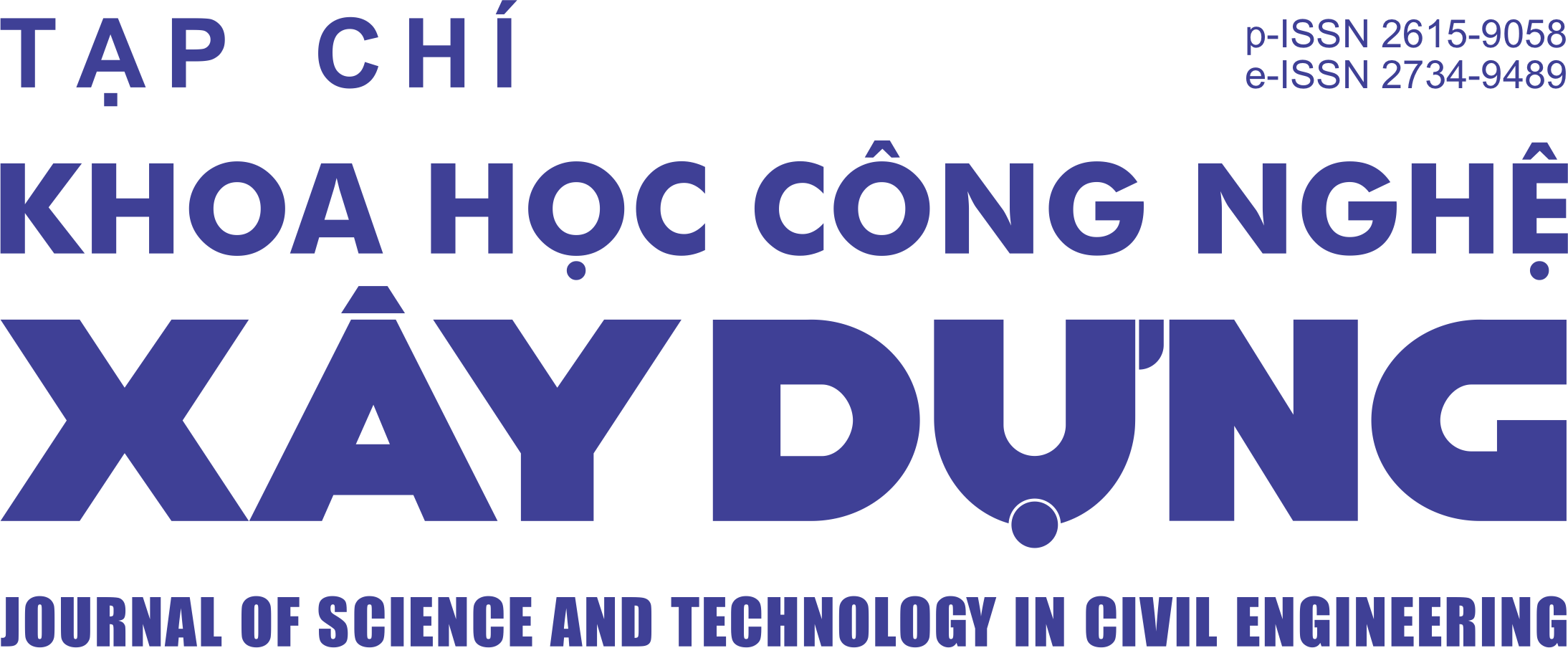Span length-dependent load-carrying capacity of normal concrete - HPFRC beams
Abstract
The dependence of load-carrying capacity on span length of beams, which contained a combination of normal strength concrete (NC) - High-performance fiber-reinforced concrete (HPFRC), was investigated in this study. The used HPFRC contained 1.0 vol.% long hooked blended with 0.5% short smooth fibers. Two types of span length were designed as 300 mm and 450 mm while dimensions of beam sections were identical with depth × width of 150 × 150 mm2. Each span included five types of partial structural materials as follows: Short 1 and Long 1 had no reinforcement with full of section using HPFRC, Short 2 and Long 2 had reinforcements with a full of section using HPFRC, Short 3 and Long 3 had reinforcements with a half of section using HPFRC at beam bottom, Short 4 and Long 4 had reinforcements with a third of section using HPFRC at beam bottom, Short 5 and Long 5 had reinforcements with a half of section using HPFRC at beam top. All beams were tested under three-point bending test. The shorter beam generally exhibited the greater load-carrying capacity than the long beam using same section type. The shear failure mode was dominant in case of the span/depth ratio less than 3. The HPFRC located at bottom of beam created the more effectiveness for enhancement of load-carrying capacity and stiffness of the beam, in comparison with the HPFRC placed at top of beam. The most effective zone of beam for HPFRC strengthening was at extreme tension fiber.
Keywords:
high-performance; composite beam; shear failure; bending resistance; load-carrying capacity.
Downloads
Copyright (c) 2021 National University of Civil Engineering

This work is licensed under a Creative Commons Attribution-NonCommercial-NoDerivatives 4.0 International License.
1. The Author assigns all copyright in and to the article (the Work) to the Journal of Science and Technology in Civil Engineering (JSTCE) – Hanoi University of Civil Engineering (HUCE), including the right to publish, republish, transmit, sell and distribute the Work in whole or in part in electronic and print editions of the Journal, in all media of expression now known or later developed.
2. By this assignment of copyright to the JSTCE, reproduction, posting, transmission, distribution or other use of the Work in whole or in part in any medium by the Author requires a full citation to the Journal, suitable in form and content as follows: title of article, authors’ names, journal title, volume, issue, year, copyright owner as specified in the Journal, DOI number. Links to the final article published on the website of the Journal are encouraged.
3. The Author and the company/employer agree that any and all copies of the final published version of the Work or any part thereof distributed or posted by them in print or electronic format as permitted herein will include the notice of copyright as stipulated in the Journal and a full citation to the Journal as published on the website.







